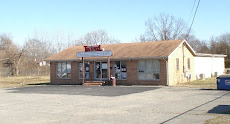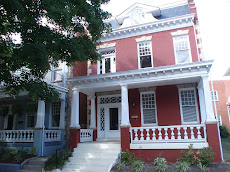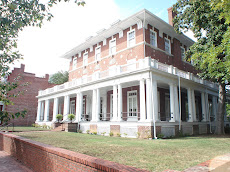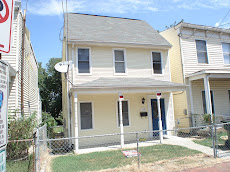SUMMARY OF THE CENTRAL VIRGINIA AREA HOUSING MARKET ANALYSIS
2nd Quarter 2010 courtesy of Richmond Association of Realtors
National and Local Economic Overview
The national economy slowed in the second quarter of 2010 as many indicators decelerated from their growth rates in the last half of 2009 and the first quarter of this year. One of the reasons for the slowdown in the economic recovery was a growing concern about the financial stability of Western Europe. This concern caused some negative volatility in the financial markets in the U.S., but those concerns seem to be subsiding as the EU central banks have acted and as many have realized how small the troubled countries’ economies are relative to all of Western Europe.
Another reason for the slowing is a following of historical trends—after a recession the economy bounces sharply and then grows more slowly. It is likely that economic measures over the past few months are indicating a slow patch and continued adjustment will be seen before a steadier and sustainable climb will be realized. The Richmond economy is clearly in a better position in 2010 than in 2009, and is almost back to realizing job growth again, which will be a very positive sign for the housing market.
Home sales nationally reflect what most analysts had predicted—a decline coincident with the ending of the tax credits. With a gradually improving economy and jobs picture, the housing market will recover as it begins to stand on its own feet again but it will likely take the rest of this year for the bumpiness to smooth out.
Central Virginia Area Housing Market
After several quarters of upticks in sales activity, pending sales, and active listings, coupled with price declines, the pattern has changed slightly in the second quarter of 2010. Home sales activity is up significantly in the second quarter of 2010. Prices are still down, though the declines are more modest than they have been in recent quarters. Both the number of pending sales and the number of active listings are lower in the second quarter of 2010 than they were a year earlier.
Nevertheless, when 2010 Year to Date numbers are compared with the first six months of 2009, the number of sold units in 2010 (5,254) is 18% better than 2009, while the number of pendings (6,588) is 1.7% higher.
Home Sales
Sales activity has been on the rise since the third quarter of 2009, but the number of home sales accelerated significantly in the second quarter of 2010. In the Central Virginia region, there were 3,696 homes sold in the second quarter of 2010. (See figure 3.) The number of sales is up 22 percent over the number of sales in the second quarter of 2009.
The dramatic acceleration in home sales can be attributed largely to the Federal homebuyer tax credits, which were available to home buyers who had a signed contract by the end of April and closed by the end of June. (Recent legislation extended the deadline for closing though no additional homebuyers who had a signed contract after April 30 a eligible for the credit.) Many homebuyers purchased a home in the spring, rather than waiting unit the summer, in order to take advantage of the credit. As a result, a drop off in sales will likely be seen in the third quarter of this year.
There were 3,151 sales in the Richmond Metro Area in the second quarter of 2010, which was up 23 percent over the second quarter of 2009. The biggest jump in sales was in Henrico County, where the number of sales increased by 28 percent. In the Tri Cities Area, there were 258 sales in the second quarter of 2010, up 16 percent over the second quarter of 2009.
Looking over the first half of 2010 provides a similar picture. There were a total of 5,684 sales
year-to-date (YTD) in the Central Virginia region compared with 4,887 sales in the first half of
2009, reflecting an increase of 16.3%.
Pending Sales
Pending sales numbers give an indication of future sales activity. After being up for several quarters in a row, the number of pending sales in the Central Virginia region was down in the second quarter of 2010 compared with the second quarter of 2009. This decline probably represents quicker movement from pending to closed for homebuyers looking to take advantage of the homebuyer tax credit. This drop also provides further evidence that sales in the third quarter of 2010 will likely be somewhat lower.
In the Central Virginia region, there were 3,579 pending sales in the second quarter of 2010, down eight percent from the second quarter of 2009. There were 3,037 pending sales in the Richmond Metro Area and 266 pending sales in the Tri Cities Area and both numbers were down seven percent from a year earlier.
Outlook for 2010
The end of the second quarter of 2010 marks the end of the Federal homebuyer tax credit programs and the beginning of a regional housing market that will need to stand on its own two feet. The supply of housing for sale has started to moderate, with the number of active listings in June 2010 about the same as the number of June 2009. Demand will dip in the summer, as a result of homebuyers having pushed up purchases to the spring, but will return later in the year as the region’s economy improves. A somewhat smaller inventory and an increase demand should help spur the region’s housing market in late 2010 and into early 2011.
Monday, July 26, 2010
Some good news in the local Richmond housing market
Henrico leads way as region home sales surge
Credit: TIMES-DISPATCH
Henrico County led the Richmond metro area in the boost in home sales.
By Carol Hazard TIMES-DISPATCH STAFF WRITERPublished: July 23, 2010
The housing market in the Richmond area has turned upward, with sales outpacing the nation and state, according to reports released yesterday.
The number of new and previously owned houses sold in Richmond and in Chesterfield, Hanover and Henrico counties jumped 23 percent in the second quarter from the same period a year ago -- more than three times the state rate, according to a report by the Richmond Association of Realtors.
Henrico saw the sharpest rise, up 28 percent from a year ago.
Yet the median price -- with half the houses selling for more and half for less -- fell 4 percent during the quarter in the Richmond area to $199,630.
Federal tax credits for first-time and move-up buyers spurred sales, Karen Tilson Smith, president of the Richmond Association of Realtors, said during a media call.
But foreclosures and short sales pushed prices down, she said. "We still need to see consumer confidence where homeowners are willing to move up."
Statewide, sales of new and previously owned houses rose 6.4 percent in the second quarter from a year ago, according to a report by the Virginia Association of Realtors. The median price statewide was $235,000, up 2.2 percent.
It took on average 85 days to sell a house in Virginia, down 16.5 percent from a year ago, according the Virginia housing trends report.
Realtor Vinh Nguyen from Falls Church said the inventory in Northern Virginia was moving quickly. But Percy Montague IV, a Realtor from Charlottesville, characterized the market there as fragile during the media call. Carol F. Jones from Abingdon near Bristol said only about 30 percent of people applying for home mortgage loans were approved.
Nationally, sales of previously owned houses in June rose 9.8 percent to a seasonally adjusted annual rate of 5.37 million units from the same month a year ago, but sales fell 5.1 percent from the previous month, the National Association of Realtors said yesterday.
Lawrence Yun, chief economist for the national association, said federal tax credits provided a spring surge. "Only when jobs are created at a sufficient pace will home sales return to sustainable healthy levels," he said.
The national median price was $183,700, up 1 percent from a year ago. Distressed homes accounted for 32 percent of sales in June.
Meanwhile, mortgage rates fell yesterday to a new record low for the fourth time in five weeks.
The average rate on a 30-year loan was 4.56 percent, down from 4.57 last week, according to Freddie Mac. The rate on a 15-year loan was 4.03 percent, down from 4.06 last week and the lowest in records dating to 1991.
The housing market will remain bumpy, but the trend here and elsewhere is positive overall, said John McClain, a senior fellow at George Mason University's Center for Regional Analysis.
"There is a slow and building momentum of growth," he said. "People aren't going to feel as good as we would like for the next few months, but the basic economic indicators are pretty good."
Credit: TIMES-DISPATCH
Henrico County led the Richmond metro area in the boost in home sales.
By Carol Hazard TIMES-DISPATCH STAFF WRITERPublished: July 23, 2010
The housing market in the Richmond area has turned upward, with sales outpacing the nation and state, according to reports released yesterday.
The number of new and previously owned houses sold in Richmond and in Chesterfield, Hanover and Henrico counties jumped 23 percent in the second quarter from the same period a year ago -- more than three times the state rate, according to a report by the Richmond Association of Realtors.
Henrico saw the sharpest rise, up 28 percent from a year ago.
Yet the median price -- with half the houses selling for more and half for less -- fell 4 percent during the quarter in the Richmond area to $199,630.
Federal tax credits for first-time and move-up buyers spurred sales, Karen Tilson Smith, president of the Richmond Association of Realtors, said during a media call.
But foreclosures and short sales pushed prices down, she said. "We still need to see consumer confidence where homeowners are willing to move up."
Statewide, sales of new and previously owned houses rose 6.4 percent in the second quarter from a year ago, according to a report by the Virginia Association of Realtors. The median price statewide was $235,000, up 2.2 percent.
It took on average 85 days to sell a house in Virginia, down 16.5 percent from a year ago, according the Virginia housing trends report.
Realtor Vinh Nguyen from Falls Church said the inventory in Northern Virginia was moving quickly. But Percy Montague IV, a Realtor from Charlottesville, characterized the market there as fragile during the media call. Carol F. Jones from Abingdon near Bristol said only about 30 percent of people applying for home mortgage loans were approved.
Nationally, sales of previously owned houses in June rose 9.8 percent to a seasonally adjusted annual rate of 5.37 million units from the same month a year ago, but sales fell 5.1 percent from the previous month, the National Association of Realtors said yesterday.
Lawrence Yun, chief economist for the national association, said federal tax credits provided a spring surge. "Only when jobs are created at a sufficient pace will home sales return to sustainable healthy levels," he said.
The national median price was $183,700, up 1 percent from a year ago. Distressed homes accounted for 32 percent of sales in June.
Meanwhile, mortgage rates fell yesterday to a new record low for the fourth time in five weeks.
The average rate on a 30-year loan was 4.56 percent, down from 4.57 last week, according to Freddie Mac. The rate on a 15-year loan was 4.03 percent, down from 4.06 last week and the lowest in records dating to 1991.
The housing market will remain bumpy, but the trend here and elsewhere is positive overall, said John McClain, a senior fellow at George Mason University's Center for Regional Analysis.
"There is a slow and building momentum of growth," he said. "People aren't going to feel as good as we would like for the next few months, but the basic economic indicators are pretty good."
Saturday, July 24, 2010
Trends in the real estate markets - Urban vs. Suburban
This is a re-post of an interesting article I found on the net:
Disturbia in Suburbia – A Permanent Decline in Residential Property Values?
August 22, 2008 by Mr. ToughMoneyLove
Residential Real Estate is in Decline (But is it Temporary?)
It is no secret that residential property values in numerous urban and suburban centers have substantially declined in recent months. The accepted cause of such declines has been the collapse of the credit markets, overextended and under-employed homeowners, and the resulting loan defaults and foreclosures. The optimistic real estate pundits confidently predict that once all of the bad loans are flushed through the system and written off the books of the large lenders, things will return to normal. That makes sense.
In the Suburbs It’s Worse than We Thought
But some experts think that more is happening. These real estate and economic experts are bringing some hard truth to the surface: That suburban property values will not return to their glorious levels of old and are destined for a permanent decline. Mr. ToughLoveMoney, being a suburban homeowner himself, is very interested in this prediction because he expects to downsize in the not too distant future. Home equity is part of his financial and retirement plans as it no doubt is for many others.
Traffic + Commuter Frustration + Increasing Gas Prices = Trouble in Real Estate Land
A substantial percentage and perhaps a majority of the workers in many urban areas get up early in the morning, get in their cars, and drive 30 minutes, 60 minutes, or even longer to their jobs in or near the urban core. At the end of the day, they reverse the process. They live in the suburbs which is supposed to provide a relaxing escape from the stress of working life. But the stress trend is going in the opposite direction.
According to one study, commuting stress (measured by heart rate and blood pressure) can often exceed that of fighter pilots going into battle or riot policemen. (I’m not making this up – read it yourself.)
Another study from UC Irivine had this conclusion:
Researchers found that driving alone under stressful conditions can actually cause or contribute to high blood pressure or stroke. According to this study, a long commute (more than 18 miles one way) may increase the likelihood that you will have a heart attack. It’s not only the stress involved that can increase your heart rate and blood pressure, but also the exposure of commuters to high levels of air pollution, which appears to be a risk factor for heart disease.
The worst areas for commuting (according to Forbes) are:
1. Riverside, Calif.
2. Atlanta, Ga.;
3. Los Angeles, Calif.;
4. Houston, Texas; and
5. Washington, D.C.
Urban Residential Real Estate is Actually Doing Better
And now we add increasing commuting costs to the equation, brought on by the huge increases in gas prices. The data coming in shows a negative trend in suburban real estate values from these increases.
A 2008 research study by CEOs for Cities, a nonprofit group of mayors, business executives and foundation leaders, revealed that increasing gas prices were lowering suburban property values, particularly in neighborhoods located far enough from urban centers to require a lengthy commute. Conversely, the study found that values of homes in neighborhoods near urban centers were increasing.
The study examined residential real estate values in Pittsburgh, Los Angeles, Tampa, Portland and Chicago, which have metropolitan areas that have experienced differing levels of new residential development. The study found that nationally the decline in value of residential property 12 miles from a central business core were 2 to 4 percent greater compared to values in neighborhoods two miles away. This is not what we suburban dwellers are used to hearing.
In Pittsburgh, real estate values of neighborhoods close to the city core rose 2 percent over the past year while home values in the farther out suburbs declined 5 percent.
Obviously, this disturbiing data for suburban home owners is caused by more than the weak credit markets. People are figuring out that between commuting stress and commuting costs, living in McMansions in far flung suburban areas just ain’t what it used to be. People want to be closer to where the jobs are. And now homeowners in those areas are being hit by this reality: The appreciation in the value of their homes that they anticipated when they bought may not happen. They may actually depreciate, slowly but surely.
Some Financial Planning Recommendations
So what does this mean for our overall financial and retirement planning? Here is the tough love picture:
If you live in the suburbs and are counting on cashing out your home equity to fuel your retirement plan, do not have unrealistic expectations as to appreciation. Consider the risks of possible depreciation.
If you live in or near a central business core and are considering heading to the suburbs, think again. Holding on to your property may provide a return on your investment that far exceeds what you will experience by moving outside the city. At the least, look for a suburban area that has a strong job center in close proximity.
Re-visit your investment portfolio. If you own a REIT, a REIT mutual fund, or stock in one of the major suburban home builders like Pulte, consider the affects that these property value trends will have on the performance of those holdings. It may be time to make some adjustments.
Let me apologize to my suburban readers for bringing such disturbing news but I’m all about hard truth. (But you knew that already, didn’t you?)
Now I must leave to commute to work. (Breath deeply ….relax…..)
Disturbia in Suburbia – A Permanent Decline in Residential Property Values?
August 22, 2008 by Mr. ToughMoneyLove
Residential Real Estate is in Decline (But is it Temporary?)
It is no secret that residential property values in numerous urban and suburban centers have substantially declined in recent months. The accepted cause of such declines has been the collapse of the credit markets, overextended and under-employed homeowners, and the resulting loan defaults and foreclosures. The optimistic real estate pundits confidently predict that once all of the bad loans are flushed through the system and written off the books of the large lenders, things will return to normal. That makes sense.
In the Suburbs It’s Worse than We Thought
But some experts think that more is happening. These real estate and economic experts are bringing some hard truth to the surface: That suburban property values will not return to their glorious levels of old and are destined for a permanent decline. Mr. ToughLoveMoney, being a suburban homeowner himself, is very interested in this prediction because he expects to downsize in the not too distant future. Home equity is part of his financial and retirement plans as it no doubt is for many others.
Traffic + Commuter Frustration + Increasing Gas Prices = Trouble in Real Estate Land
A substantial percentage and perhaps a majority of the workers in many urban areas get up early in the morning, get in their cars, and drive 30 minutes, 60 minutes, or even longer to their jobs in or near the urban core. At the end of the day, they reverse the process. They live in the suburbs which is supposed to provide a relaxing escape from the stress of working life. But the stress trend is going in the opposite direction.
According to one study, commuting stress (measured by heart rate and blood pressure) can often exceed that of fighter pilots going into battle or riot policemen. (I’m not making this up – read it yourself.)
Another study from UC Irivine had this conclusion:
Researchers found that driving alone under stressful conditions can actually cause or contribute to high blood pressure or stroke. According to this study, a long commute (more than 18 miles one way) may increase the likelihood that you will have a heart attack. It’s not only the stress involved that can increase your heart rate and blood pressure, but also the exposure of commuters to high levels of air pollution, which appears to be a risk factor for heart disease.
The worst areas for commuting (according to Forbes) are:
1. Riverside, Calif.
2. Atlanta, Ga.;
3. Los Angeles, Calif.;
4. Houston, Texas; and
5. Washington, D.C.
Urban Residential Real Estate is Actually Doing Better
And now we add increasing commuting costs to the equation, brought on by the huge increases in gas prices. The data coming in shows a negative trend in suburban real estate values from these increases.
A 2008 research study by CEOs for Cities, a nonprofit group of mayors, business executives and foundation leaders, revealed that increasing gas prices were lowering suburban property values, particularly in neighborhoods located far enough from urban centers to require a lengthy commute. Conversely, the study found that values of homes in neighborhoods near urban centers were increasing.
The study examined residential real estate values in Pittsburgh, Los Angeles, Tampa, Portland and Chicago, which have metropolitan areas that have experienced differing levels of new residential development. The study found that nationally the decline in value of residential property 12 miles from a central business core were 2 to 4 percent greater compared to values in neighborhoods two miles away. This is not what we suburban dwellers are used to hearing.
In Pittsburgh, real estate values of neighborhoods close to the city core rose 2 percent over the past year while home values in the farther out suburbs declined 5 percent.
Obviously, this disturbiing data for suburban home owners is caused by more than the weak credit markets. People are figuring out that between commuting stress and commuting costs, living in McMansions in far flung suburban areas just ain’t what it used to be. People want to be closer to where the jobs are. And now homeowners in those areas are being hit by this reality: The appreciation in the value of their homes that they anticipated when they bought may not happen. They may actually depreciate, slowly but surely.
Some Financial Planning Recommendations
So what does this mean for our overall financial and retirement planning? Here is the tough love picture:
If you live in the suburbs and are counting on cashing out your home equity to fuel your retirement plan, do not have unrealistic expectations as to appreciation. Consider the risks of possible depreciation.
If you live in or near a central business core and are considering heading to the suburbs, think again. Holding on to your property may provide a return on your investment that far exceeds what you will experience by moving outside the city. At the least, look for a suburban area that has a strong job center in close proximity.
Re-visit your investment portfolio. If you own a REIT, a REIT mutual fund, or stock in one of the major suburban home builders like Pulte, consider the affects that these property value trends will have on the performance of those holdings. It may be time to make some adjustments.
Let me apologize to my suburban readers for bringing such disturbing news but I’m all about hard truth. (But you knew that already, didn’t you?)
Now I must leave to commute to work. (Breath deeply ….relax…..)
Subscribe to:
Comments (Atom)













































